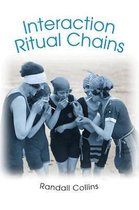Samenvatting
Samenvatting ALI lessen & boeken
This document contains all notes from ALI's classes. Extensive summaries of Linder (the harried leisure class) and Blackshaw (handbook of leisure studies) and a short summary of Collins (interaction ritual chains). This summary is all you need to know for the oral. I myself had a 7.5 but if you thi...
[Meer zien]




